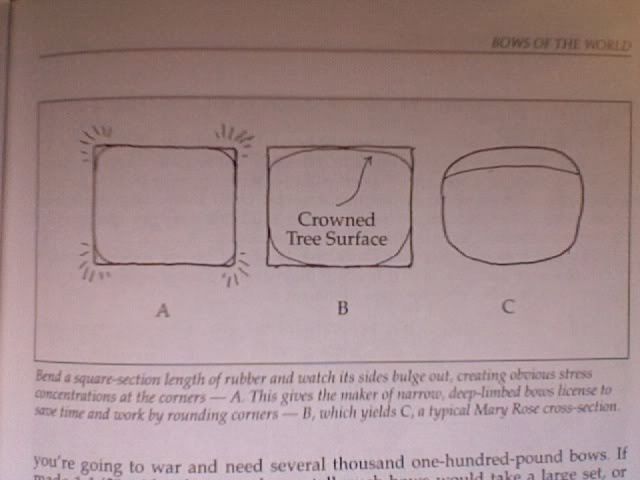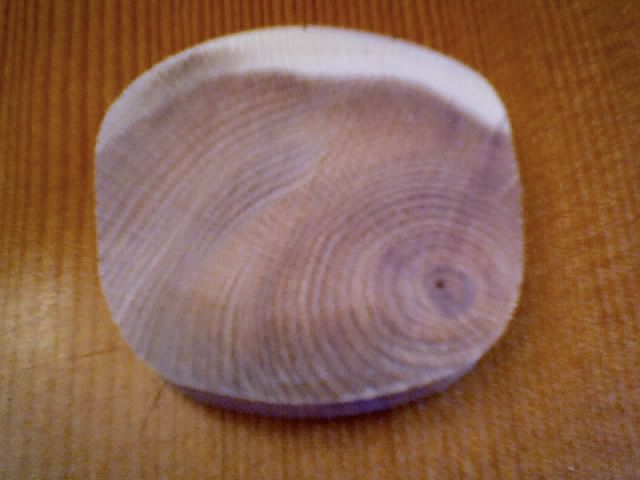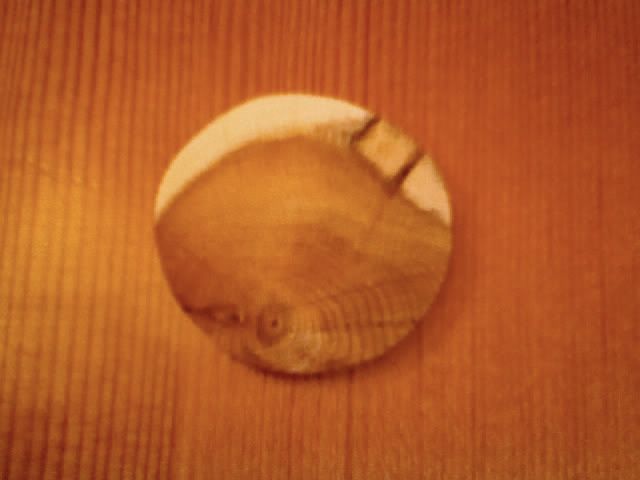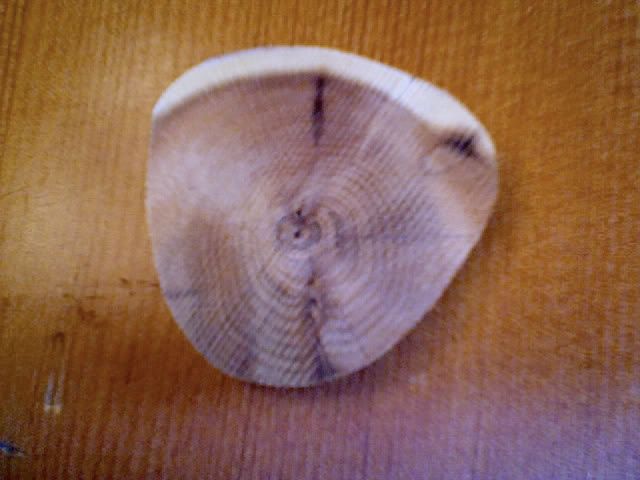Step 5: Cross-Section and Limb Depth
The outline of our war bow has been carefully cut out and the tips have been worked down to just over 1/2” wide. If you have taken the plunge and bought a full-length Yew stave for your war bow, you may soon understand why Yew has gained such a favored reputation in the course of archery history. At this point the depth of the limb needs to be reduced to an approximate 1:1 relationship with the width. It will be reduced further as the section begins to take shape, but for now it is better to have too much wood than too little.
You may proceed as usual with your band saw now, but be very cautious—ruining a good Yew stave is a high crime. As I was saying about understanding why Yew has gained its favored reputation throughout history—grab a draw knife and no further explanation need be given. Working a good piece of Yew with a draw knife yields long, sweet-smelling curls of wood and leaves behind an almost polished surface. Those of you who have primarily worked white wood may have wondered why the draw knife and spoke shave are part of the bowyer’s toolkit at all. As you shape your Yew stave with just such tools, those questions will well be answered. Conservatively work the limb depth down to match the limb width, or just under.
The limb tips should be perfectly round and will eventually finish out to 12mm (just barely under 1/2”). It is a good idea to use a dial caliper to help shape the tips down close to their finished size. Follow with a 1/2” hole drilled in a piece of scrap to check for roundness. A perfect fit with the horn nock (mandatory) is achievable only with a perfectly round limb tip (a few tips on horn nocks Wednesday).
When the limb tips are round and close to their finished size, you can proceed from there toward the handle. At this point you will be rounding the edges of the back and belly and will have to decide on a cross-section. Although the limb section of English bows is generally referred to as a ‘D-section,’ there is flexibility offered in the range of sections on the Mary Rose samples. For the most part the Mary Rose bows were about 38-40mm wide in the handle and 33-35mm deep. This establishes an approximate 7:8 depth-to-width ratio, but slight divergence is permissible as the small surviving sampling of medieval war bows shows that there was latitude for bowyer’s preference.
If you have the Traditional Bowyer’s Bible Volume Three, you should take the time to read the section on war bows in chapter 3. This is a fairly good explanation of the advantages of the D section.

Another valuable resource for understanding relative tension/compression stresses is the following thread on this site:
http://www.primitivearcher.com/smf/index.php/topic,490.0.htmlSome Mary Rose-like sections and their advantages may include:
Semi-rectangular: Most working wood. High energy storage and low set. More vulnerable to a tension break.

Semi-Oval: Lots of working wood. No vulnerable ridges. Even stress distribution. Good section for a stave with a high crown.

Semi-Round: Similar to oval section but with a higher crown. More vulnerable back.

True-D: The narrow belly becomes the ‘weak link.’ The back is wider (thus stronger) than the belly, so the belly is more likely to fret or take set than the back is to explode. A good section for cautious bowyers, or in cases where the back looks vulnerable to breakage. Also, a good choice for Pacific Yew in general.

In the case of my own replica, I have chosen to use a true D section and a depth-to-width ratio of 5:6 (1 1/2” wide by about 1 1/4” deep). I have done this partially on Pip’s recommendation to keep my bow wide, as Oregon Yew is not as dense as European Yew and thus benefits from the extra width in the back to share the tension strain. I chose to do a deep D section because I wanted my bow to have that classic shape, and because I wanted to use the section that would make my bow less vulnerable to breakage. I was willing to allow for a little more set to keep this bow from blowing up at a 30” draw. Also, my stave came from a 10-12” tree, so the back is very flat, and a round or oval section would require violating too many growth rings on the back (not a huge problem with Yew, but I’m being very cautious here).
We’ll begin the tillering process tomorrow. Until then…
J. D. Duff